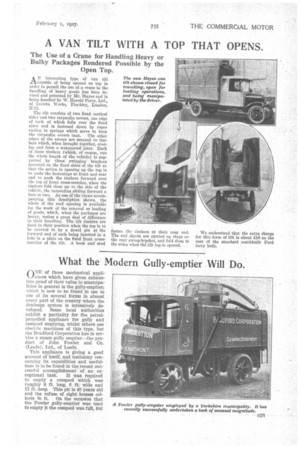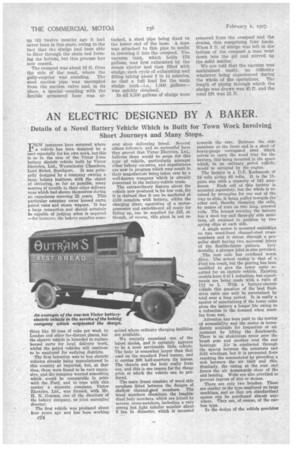What the Modern Gully-emptier Will Do.
Page 45

Page 46

If you've noticed an error in this article please click here to report it so we can fix it.
0"of those mechanical appliances which have given exhaustive proof of their value to municipalities in general is the gully-emptier; which is now to be found in use in one of its several forms in almost every part of the country where the drainage system is intensively developed. Some local authorities exhibit a partiality for the petrolpropelled appliance for gully and cesspool emptying, whilst others pse electric machines of this type, but the Bradford Corporation has in service a steam gully emptier—the product of John Fowler and Co. (Leeds), Ltd., of Leeds.
This appliance is giving a good account of itself, and testimony concerning its capabilities and usefulness is to be found in the recent successful accomplishment of an ex
ceptional task. It was required to empty a cesspool which was roughly 8 ft. long, 6 ft. wide and 12 ft. deep. This pit Is 40 years old and the refuse of eight houses collects in it. On the occasion that the Fowler gully-emptier was used to empty it the cesspool was full, but
up till twelve months ago it had never been in this state, owing to the fact that the sludge had been able to filter through the shale bed forming the bottom, but this process has now ceased.
The cesspool was about 16 ft. from the side of the road, where the gully-emptier was standing. The steel suction pipe was uncoupled from the suction valve and, in its place, a special coupling with the flexible armoured hose was at
tached, a steel pipe being fixed to the lower end of the hose. A rope was attached to. thin pipe to assist in lowering it into the cesspool. The vacuum tank, which holds 170 gallons, was first exhausted by the steam ejector and then filled with sludge, each cycle of exhausting and filling taking about 1 to 1i minutes, so that a full load for the Main sludge tank—i.e., 1,000 gallons-was quickly obtained.
In all 5,500 gallons of sludge were
removed from the cesspool and the drains, this comprising four loads. When 3 ft. of sludge was left in the bottom of the cesspool a man went down into the pit and stirred up the solid matter.
We are told that the vacuum was maintained easily, no difficulty whatever being experienced during the whole of the operations. The length of piping through which the sludge was drawn was 45 ft. and the total lift was 22 ft.


































































































